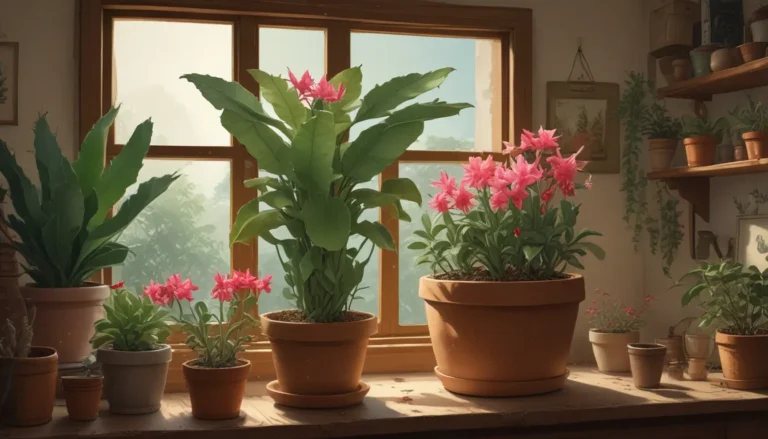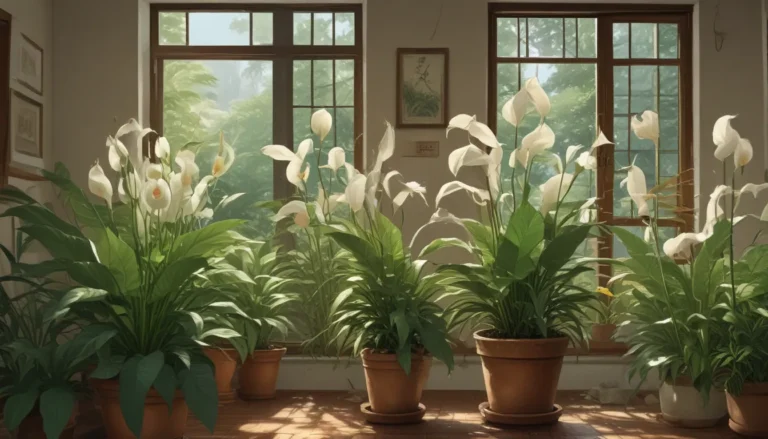Comprehensive Guide to Understanding and Fixing Long Necks and Leggy Growth in African Violets

African violets are a delightful addition to any indoor garden when they’re thriving and blooming. However, when they begin to display signs of unhappiness, such as long necks and leggy growth, they can look quite peculiar. Not to worry, though – there are solutions to these common issues that can help you revitalize your plants and bring them back to their full glory.
Let’s delve into the reasons behind these growth problems and explore effective fixes to help your African violets thrive.
What You’ll Discover
- What Causes Long Necks in African Violets?
- How to Address Long Necks
- What Causes Leggy Growth in African Violets?
- How to Deal with Leggy Growth
Before we proceed, let’s clear up a few misconceptions:
African violets can exhibit either long “necks,” which resemble trunk-like growth in the center of the plant, or long petioles, which are the extensions between the main stem and the leaves.
These two types of growth issues have distinct causes, which we’ll explore in detail.
What Causes Long Necks in African Violets?
Long necks in African violets typically develop over time as lower leaves naturally drop off. However, if this happens prematurely, it can result from factors such as inadequate lighting, overwatering, or pest infestations.
A healthy African violet will retain its lower leaves for an extended period, but environmental stressors can cause them to shed leaves more quickly, leading to the formation of a long neck.
It’s important to assess the age of your plant as well – if it’s older than five years, a long neck may be a natural progression. For younger plants, identifying and addressing the underlying issue is crucial.
How to Address Long Necks
To tackle long necks effectively, start by evaluating the plant’s growing conditions. Ensure it receives bright, indirect light, as inadequate lighting can lead to leggy growth.
Check the soil moisture by feeling it with your finger. If it’s excessively wet, you may be overwatering the plant, which can contribute to leaf drop.
Inspect the plant for signs of pests or disease, such as moving insects, webbing, brown spots, or yellowing leaves. Address any infestations promptly to restore the plant’s health.
If the long neck is due to age or resolved environmental factors, repot the plant slightly deeper to bury the exposed neck in fresh soil. Maintain the recommended ratio between the plant’s width and the pot size for optimal growth.
What Causes Leggy Growth in African Violets?
Leggy growth in African violets refers to elongated petioles and upward leaf growth, a condition known as etiolation. This type of growth occurs when the plant lacks adequate sunlight, causing it to stretch out in search of light.
The weakened state of the plant due to leggy growth can be temporary, and with proper care, new growth can emerge to replace the leggier leaves.
How to Deal with Leggy Growth
To address leggy growth effectively, provide your African violet with more indirect light. Position it near an east- or west-facing window with a sheer curtain or consider supplemental lighting options for optimal growth.
If the plant’s petioles have elongated significantly, resulting in leggy foliage, new growth will eventually replace the old leaves. In some cases, trimming off the leggy leaves with sterilized scissors may be necessary to promote healthier growth.
Remember, older outer leaves are more likely to become leggy, so consider the overall appearance of the plant before removing foliage.
Enhancing the Beauty of Your African Violets
Caring for African violets can be a rewarding experience, albeit a bit tricky at times. By providing them with the right lighting conditions, moisture levels, and soil depth, you can help them thrive and maintain their beauty.
If you’re facing challenges with leggy growth or long necks in your African violets, don’t fret. By following the recommended solutions and adjustments, you can restore your plants to their optimal health and appearance.
Have you encountered leggy growth or long necks in your African violets? How did you address these issues, and how long did it take for healthy new growth to emerge? Share your experiences in the comments below to help fellow plant enthusiasts navigate these common challenges.
For more in-depth guides on growing and caring for African violets, check out the following resources:
- How to Grow and Care For African Violets
- How to Propagate African Violets from Leaf Cuttings
Let’s continue to nurture our African violets and create thriving indoor gardens together!
Remember, with the right care and attention, your African violets can flourish and bring beauty to your home. Happy gardening!





